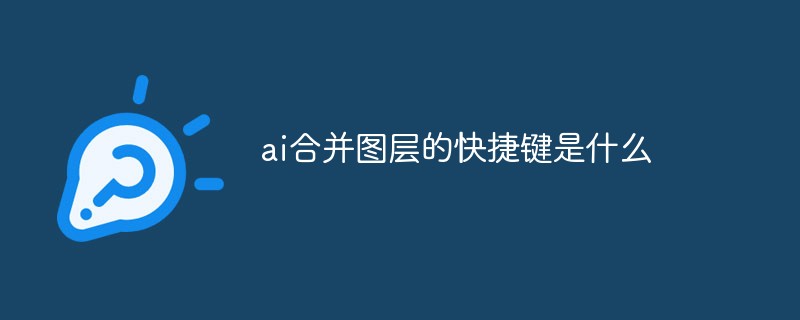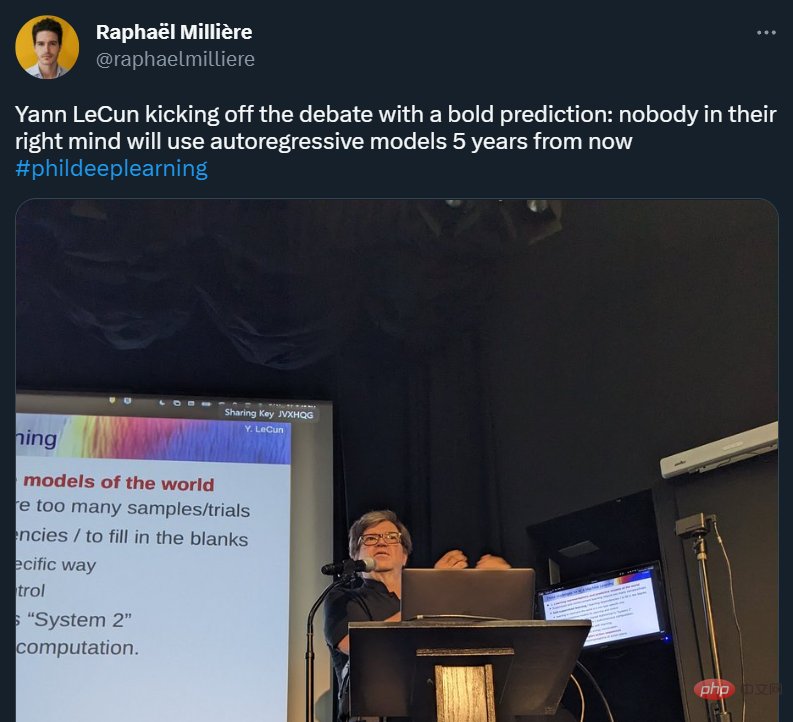 Technology peripherals
Technology peripherals AI
AI Let's use five ways to apply responsible generative AI techniques at work
Let's use five ways to apply responsible generative AI techniques at work
Midjourney, ChatGPT, Bing AI Chat, and other AI tools make generative AI easier to use, and these tools create a wealth of ideas, experiments, and creativity. If you want to use generative AI in your organization, you're still faced with the question of where to start making AI work, and how to do it without running into ethical dilemmas, copyright infringement, or factual errors. A good start is to use generative AI to empower people who are already experts in their field, helping them save time and become more productive.
There are many other ways you can start using generative AI right away, and generative AI may already be integrated into several tools and platforms your organization is using. Therefore, you need to consider developing a guide on how to trial and adopt these tools. Here are five key areas to consider using generative AI, along with guidance on finding other suitable scenarios.
1. Improve developer productivity skills
People often think that coding is somewhere between art and science, but a lot of work in programming is routine and repetitive. The rise of cloud platforms and module repositories means that writing modern applications and bringing together components and APIs, refactoring existing code, optimizing environments, and orchestrating pipelines is as important as coming up with algorithms. Much of this work is ripe for automation and AI assistance, but equally, you need to know how and where to use these tools to monitor their impact and effectiveness. Before you make the full switch to coding assistants, you can start with one-off tools that speed up specific common tasks.
Documentation is both important and often overlooked: not only can you let generative AI document the code base, but you can also build a chat interface into your documentation that allows developers to ask questions through the interface about how it works and how to use it. way, or just replace the usual search box, turning generic documents into conversational programming, where the AI can, for example, take the data and show how it wrote the query.
Testing is another area that is easily overlooked, and automatically generating unit tests can help you expand your testing scope. Submission bots can also help developers write messages that contain enough information to help users and other developers, while generative AI can do the same for IT staff who log upgrades and system reboots.
It’s also critical to tell the AI what you want to generate backend logic and other boilerplate so developers can focus on the more interesting and creative parts of the app. You should also leverage generative AI to write your own code modules (scripts that automate repetitive, time-consuming tasks in large code bases) or leverage generative AI to help fix the voice and tone to better fit in-house styles. Coding assistants like GitHub Copilot and IDEs built into large language models (LLMs) can do all of this and more, but shouldn't replace developers; these coding assistants and IDEs need to understand and evaluate code that is not written ( and the context in which it runs) in case it contains security vulnerabilities or performance bottlenecks, omissions, bad decisions, or just plain mistakes, since it is learning from repos that may contain any or all of the issues to generate code . You’ll want to consider how AI-generated code will be tracked across your organization so you can audit it and evaluate its usefulness. Developers report becoming more efficient and reducing frustration using GitHub Copilot. Microsoft says that 40% of Copilot users' code is AI-generated and unmodified. Currently, this provenance is lost once a developer leaves their IDE session, so consider documenting internal guidelines for how AI tools are used.
2. Improve the skills of low-code and no-code business users
Although business users do not have the expertise to evaluate the code generated by AI assistants, low-code and no-code environments are highly constrained and Where generative AI tools are integrated, problems are much less likely to arise.
Low-code applications require frequent retrieval and filtering of data. Low-code platforms have added generative AI capabilities that can generate lookup queries or clean returned data — such as programmatically adding missing zip codes — which allows business users without database expertise to go one step further without having to persist. Use pre-built components or wait for professional developers to write query strings for them. Open source tools like Census GPT make it easier to query large public datasets.
Code Assistant isn’t just for professional developers, either. Wix Artificial Design Intelligence (ADI) can build you a complete website, combining code generation and generative design; Uizard can do the same for website and app prototypes; Fronty can convert images to HTML and CSS, and Microsoft Power The Express design function in Apps can convert hand-drawn sketches or Figma files into runnable applications, which is completed on the backend.
Most generative AI uses of interest to enterprise organizations are modules that can be called within low-code automated workflows so that employees can tailor them to their specific needs. Moreover, many platforms already provide ChatGPT and other OpenAI APIs like any other component. However, make sure any warnings or guidance that comes with the generated text or images are displayed correctly in a low-code environment, ideally there is a way to provide feedback, and staff know your policy if this can be shown directly to customers without requiring staff to advance Review these.
3. Understand documents and data
Combining the customized version of ChatGPT with Bing has brought millions of new users to Microsoft's Bing search engine. But the way LLM works means errors and "illusions" can occur because they essentially autocomplete sentences and paragraphs to produce text that matches the query prompt. If the information you want does not exist, the model will still try to create some reasonable information, and even if the information provided is correct and consistent with what most experts in a field say, the answer may be incomplete and incomplete. Accurate, and if you're not an expert yet, you probably don't even know what you're missing. These issues are a big problem for both enterprise search and the public web; Microsoft's upcoming Microsoft 365 Copilot tool will try to solve this problem by querying and providing references to Microsoft Graph data based on documents and entities, but some may still be missed Key points need to be added by yourself.
Start looking for opportunities to leverage LLM to summarize and analyze documents, or generative text to explain concepts in those more restricted scenarios where information is reviewed internally by people with expertise , rather than being displayed directly to your customers or other end users.
Generate a knowledge graph to visually display the connections and relationships between different entities to help you understand the project, community or ecosystem. The Copilot tool in Excel enables you to gain insights in an interactive way and ask questions about your data in a sandbox that does not change the underlying data, so any mistakes may lead you down the wrong path but should not contaminate Raw information for future analysis.
Telling stories with data is another effective way to communicate key trends and AI analysis. Smart Narratives in Power BI, for example, can find anomalies and influencing factors and then describe them with charts and automatically generated descriptions. explain. This avoids the mathematical problems faced by LLM, as insights are derived by AI models such as linear regression and then described by language models. This integrated approach may become more common. Similarly, security tools are starting to use language generation to explain threats, anomalies, and evidence of potential breaches detected by AI, telling you in clear and personalized language what it means and how to respond. In the future, the hope is to be able to ask questions to these tools and have them interpret the suggestions they give.
You can also make existing chatbots smarter and more flexible, from keywords and fixed response content to making response content sound more natural and automatically included when the knowledge base is updated. new information. Likewise, it is tempting to use generative AI to interact directly with customers to improve customer satisfaction and reduce costs, but this is more risky than using generative AI within an organization to surface useful information about benefits and other HR issues. Bigger. While trendy chatbots are suitable for some brands, you don’t want to make headlines because a customer received dangerous advice or was insulted by your chatbot. Using generative AI to provide agent assistance allows you to increase productivity while reducing risk.
4. Accelerate the workflow of business users
Meetings should be the place where business decisions are made and knowledge is shared, but the value of a meeting never leaves the conference room. AI tools like Microsoft Teams Premium, Dynamics 365 Copilot, and the ChatGPT app for Slack can generate summaries and record assigned task entries for attendees and those who are not in the room and may not know what they are responsible for, which can also help avoid questions about The tug-of-war over who is asked to take notes and who does other “routine office tasks.”
Being able to catch up with the busy pace of Slack every day can also improve productivity and work-life balance, but the people making plans and decisions should be responsible for ensuring the accuracy of AI-generated summaries, action items, and timelines. AI tools that summarize the content of phone calls with customers can help managers supervise and train employees. This may be useful for financial advisors and call center workers, but tools to monitor employee productivity need to be used in an empathetic way and avoid concerns raised by workplace surveillance. User feedback and product reviews are helpful, but the sheer volume of information can be overwhelming, and useful information can be hidden deep within.
Generative AI can classify, summarize, and categorize corresponding content to provide aggregated feedback that is easier to absorb. In the long term, it's easy to imagine having a personal shopping assistant make recommendations on what items you want to buy and answer questions about those items, rather than leaving you to scroll through pages of reviews yourself. But equally, companies must be wary of introducing tools that might elicit offensive or defamatory opinions, or that are overzealous in filtering out negative reactions. Generative AI tools can read and summarize long documents and use the information to draft new documents. There are already tools like Docugami that can extract due dates and deliverables from contracts, and international law firm Allen & Overy is trialling a platform to help with contract analysis and regulatory compliance. Generating semi-structured documents such as memoranda of understanding, contracts, or statements of work may speed up business processes and help you standardize some business terminology programmatically, but expect this process to require a lot of flexibility and oversight.
5. Overcome writer's block and beautify your design
You don't have to hand over the entire writing process to AI to help you brainstorm ideas, write copy, create images or designs. Soon you'll be able to ask generative AI to create documents, emails, and slides through Office 365 and Google Docs, so you'll need to have policies in place about how to check the accuracy of this content before sharing it with anyone. Likewise, you should start with more limited tasks and internal uses that can be monitored.
Generative AI can suggest what to write in customer outreach emails, thank you notes, logistics issue warnings, right in your email or in a CRM like Salesforce, Zoho or Dynamics 365 as a platform part or implemented through third-party tools. There is also great interest in using AI for marketing, but there are also brand risks. You should think of these options simply as a way to get started, rather than a final version before clicking send.
AI-generated text may not be perfect, but if you have a lot of gaps to fill, it's better than nothing. For example, Shopify Magic can take detailed basic information about a product and write consistent, SEO-tuned product descriptions for your online storefront, and once you have some content, you can improve it. Additionally, Reddit and LinkedIn use Azure Vision Services to create captions and alt text for images to improve accessibility when users don't add this content themselves. If you have a large library of training videos, automatically generated summaries may help employees make the most of their time. Generating images from text is incredibly powerful, and tools like the Microsoft Designer app can put the image propagation model into the hands of business users, who may be reluctant to use a Discord server to access Midjourney and don't have the expertise to use Photoshop. Stable Diffusion plug-in. But there are also controversies surrounding AI-generated images, from deepfakes and the uncanny valley effect to the origins of training data and the ethics of using the work of famous artists for free. Organizations will want to have a very clear policy regarding the use of generated images to avoid obvious pitfalls.
Find Your Purpose
As you can see, from customer support and retail to logistics and legal services, in any interaction you want to leverage a reliable source of information for curation, All have opportunities to benefit from generative AI.
To use generative AI responsibly, start with natural language processing, such as classification, summarization, and text generation for non-customer-facing scenarios where the output content needs to be produced by experts with discovery and Review by people with expertise in correcting errors and disinformation, and have an interface that makes this process easier and more natural than just accepting suggestions. It’s tempting to save time and money by skipping human involvement, but if the content generated is inaccurate, irresponsible, or offensive, the damage to your business can be significant.
Many organizations worry about leaking data into models that could help competitors. Google, Microsoft, and OpenAI have all published data usage policies and said that the data and hints used by enterprises will only be used to train their models, not in the core models provided to each customer. But you still have a guideline on what information employees can copy into public generative AI tools.
The manufacturer also stated that users have ownership of model inputs and outputs, which is a good idea in theory, but may not reflect the complexity of generative AI when it comes to copyright and plagiarism issues, and models like ChatGPT Quotes are not included, so you don’t know whether the textual content returned by the generative AI is correct or copied from someone else. Paraphrasing isn’t exactly plagiarism, but stealing someone else’s original ideas or insights is never a good thing for any business.
It is also important for organizations to develop AI literacy and familiarize employees with using and evaluating the output of generative AI. Remember, you have to start small in the areas that don’t matter and learn from the areas that work.
The above is the detailed content of Let's use five ways to apply responsible generative AI techniques at work. For more information, please follow other related articles on the PHP Chinese website!
 ai合并图层的快捷键是什么Jan 07, 2021 am 10:59 AM
ai合并图层的快捷键是什么Jan 07, 2021 am 10:59 AMai合并图层的快捷键是“Ctrl+Shift+E”,它的作用是把目前所有处在显示状态的图层合并,在隐藏状态的图层则不作变动。也可以选中要合并的图层,在菜单栏中依次点击“窗口”-“路径查找器”,点击“合并”按钮。
 ai橡皮擦擦不掉东西怎么办Jan 13, 2021 am 10:23 AM
ai橡皮擦擦不掉东西怎么办Jan 13, 2021 am 10:23 AMai橡皮擦擦不掉东西是因为AI是矢量图软件,用橡皮擦不能擦位图的,其解决办法就是用蒙板工具以及钢笔勾好路径再建立蒙板即可实现擦掉东西。
 谷歌超强AI超算碾压英伟达A100!TPU v4性能提升10倍,细节首次公开Apr 07, 2023 pm 02:54 PM
谷歌超强AI超算碾压英伟达A100!TPU v4性能提升10倍,细节首次公开Apr 07, 2023 pm 02:54 PM虽然谷歌早在2020年,就在自家的数据中心上部署了当时最强的AI芯片——TPU v4。但直到今年的4月4日,谷歌才首次公布了这台AI超算的技术细节。论文地址:https://arxiv.org/abs/2304.01433相比于TPU v3,TPU v4的性能要高出2.1倍,而在整合4096个芯片之后,超算的性能更是提升了10倍。另外,谷歌还声称,自家芯片要比英伟达A100更快、更节能。与A100对打,速度快1.7倍论文中,谷歌表示,对于规模相当的系统,TPU v4可以提供比英伟达A100强1.
 ai可以转成psd格式吗Feb 22, 2023 pm 05:56 PM
ai可以转成psd格式吗Feb 22, 2023 pm 05:56 PMai可以转成psd格式。转换方法:1、打开Adobe Illustrator软件,依次点击顶部菜单栏的“文件”-“打开”,选择所需的ai文件;2、点击右侧功能面板中的“图层”,点击三杠图标,在弹出的选项中选择“释放到图层(顺序)”;3、依次点击顶部菜单栏的“文件”-“导出”-“导出为”;4、在弹出的“导出”对话框中,将“保存类型”设置为“PSD格式”,点击“导出”即可;
 ai顶部属性栏不见了怎么办Feb 22, 2023 pm 05:27 PM
ai顶部属性栏不见了怎么办Feb 22, 2023 pm 05:27 PMai顶部属性栏不见了的解决办法:1、开启Ai新建画布,进入绘图页面;2、在Ai顶部菜单栏中点击“窗口”;3、在系统弹出的窗口菜单页面中点击“控制”,然后开启“控制”窗口即可显示出属性栏。
 GPT-4的研究路径没有前途?Yann LeCun给自回归判了死刑Apr 04, 2023 am 11:55 AM
GPT-4的研究路径没有前途?Yann LeCun给自回归判了死刑Apr 04, 2023 am 11:55 AMYann LeCun 这个观点的确有些大胆。 「从现在起 5 年内,没有哪个头脑正常的人会使用自回归模型。」最近,图灵奖得主 Yann LeCun 给一场辩论做了个特别的开场。而他口中的自回归,正是当前爆红的 GPT 家族模型所依赖的学习范式。当然,被 Yann LeCun 指出问题的不只是自回归模型。在他看来,当前整个的机器学习领域都面临巨大挑战。这场辩论的主题为「Do large language models need sensory grounding for meaning and u
 强化学习再登Nature封面,自动驾驶安全验证新范式大幅减少测试里程Mar 31, 2023 pm 10:38 PM
强化学习再登Nature封面,自动驾驶安全验证新范式大幅减少测试里程Mar 31, 2023 pm 10:38 PM引入密集强化学习,用 AI 验证 AI。 自动驾驶汽车 (AV) 技术的快速发展,使得我们正处于交通革命的风口浪尖,其规模是自一个世纪前汽车问世以来从未见过的。自动驾驶技术具有显着提高交通安全性、机动性和可持续性的潜力,因此引起了工业界、政府机构、专业组织和学术机构的共同关注。过去 20 年里,自动驾驶汽车的发展取得了长足的进步,尤其是随着深度学习的出现更是如此。到 2015 年,开始有公司宣布他们将在 2020 之前量产 AV。不过到目前为止,并且没有 level 4 级别的 AV 可以在市场
 ai移动不了东西了怎么办Mar 07, 2023 am 10:03 AM
ai移动不了东西了怎么办Mar 07, 2023 am 10:03 AMai移动不了东西的解决办法:1、打开ai软件,打开空白文档;2、选择矩形工具,在文档中绘制矩形;3、点击选择工具,移动文档中的矩形;4、点击图层按钮,弹出图层面板对话框,解锁图层;5、点击选择工具,移动矩形即可。


Hot AI Tools

Undresser.AI Undress
AI-powered app for creating realistic nude photos

AI Clothes Remover
Online AI tool for removing clothes from photos.

Undress AI Tool
Undress images for free

Clothoff.io
AI clothes remover

AI Hentai Generator
Generate AI Hentai for free.

Hot Article

Hot Tools

SublimeText3 Chinese version
Chinese version, very easy to use

SublimeText3 English version
Recommended: Win version, supports code prompts!

MantisBT
Mantis is an easy-to-deploy web-based defect tracking tool designed to aid in product defect tracking. It requires PHP, MySQL and a web server. Check out our demo and hosting services.

Dreamweaver CS6
Visual web development tools

WebStorm Mac version
Useful JavaScript development tools





